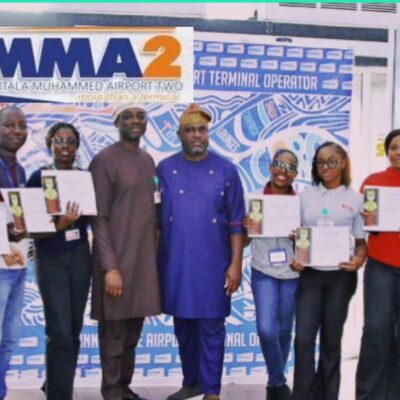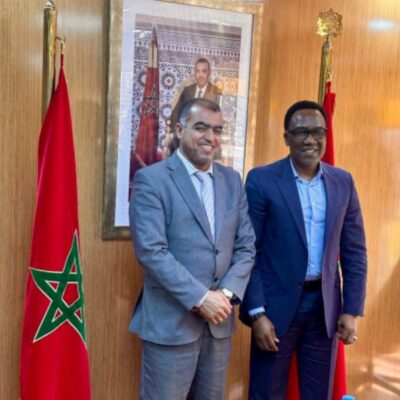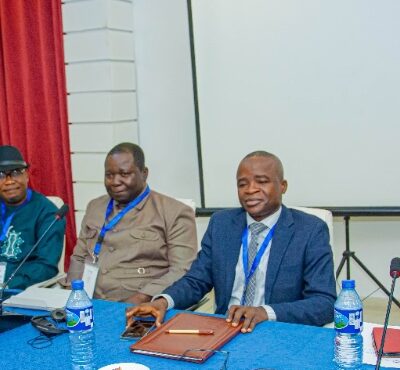
BY OLAPEJU OLUBI
Renowned economist and Managing Director of Financial Derivatives Company, Bismarck Rewane, has assessed the Nigerian economy and submitted that it is “slowly getting better,” even though most citizens are yet to feel the impact.
He made the submission in Lagos at the 2025 LAAC Annual Conference held in Lagos recently.
Rewane painted a picture of cautious optimism supported by data, while warning that hardship will linger until the gains of reforms are fully transmitted to everyday life.
“In Q3, you refused to increase to 3.36%. That’s great. Oil production, which accounts for 8% of our growth, is now at 1.5 million barrels per day. Don’t forget, 20–30 years ago, we were doing 2.3 million barrels a day. In July, it went up to 1.53 million and we expect 1.55 million soon. Our OPEC quota is 1.7 million barrels a day, so that is great”, he stated.
He noted that the oil market has shifted significantly, with prices dropping from $96 per barrel in June to $73, and likely to fall further.
“We expect it to go lower, to $70. Goldman Sachs is telling us that by the end of the year, it will be $62 a barrel. That is great,.
“Inflation, which was 22.97% in June, is projected to ease to 21.79% in July. External reserves stood at $37 billion in June, while the stock market surged from a value of ₦76 trillion in June to ₦85 trillion in July and could hit ₦95 trillion soon.
“If you bought MTN shares for ₦100 a year ago, when the price was ₦150, it is now about ₦450. Your ₦100 would be worth ₦281 today. You make money by going to bed,” Rewane said.
He continued: “Overall score, nine green, two red and one amber. Things are getting better, slowly. But there’s a lag between when things get better and when people feel the impact”, he explained.

Despite these positive numbers, he stressed that the reality on the streets remains grim.
“People are hungry, people are angry, and people are upset. The economy is passing through the worst of the reform adjustment process. Inflation, though trending downward, remains painfully high and fuel costs have jumped from ₦865 to ₦925 per litre in recent days”, the economist noted.
He credited the Dangote refinery for helping to moderate prices, noting the introduction of about 4,000 daily CNG trucks that will transport products nationwide and could bring further reductions.
Yet, he cautioned, the currency will remain volatile in the short term even as some stability takes root.
Turning to the aviation sector, Rewane called it “one of the most difficult industries in the world,” citing thin margins, high volumes, heavy regulation and capital intensity.
Quoting Richard Branson, he remarked, “If you want to be a billionaire, start with a billion dollars and launch an airline.”

He outlined the critical elements of the industry, infrastructure such as airports and maintenance facilities, regulators like NCAA, FAAN and NAMA, policy frameworks including open skies agreements and bilateral deals, and the operators themselves, from passenger carriers to cargo handlers”.
He reckoned that global airline traffic has recovered to above pre-COVID levels, with international arrivals projected to reach 1.5 billion passengers by 2025.
“Still, airline profits globally remain modest at around 3.7% compared to double-digit returns in sectors like telecoms. In Nigeria, the mismatch between capacity and viability is stark: 32 airports exist, yet only 22 are viable and 96% of traffic passes through just four.
“There are 23 active domestic airlines, but only five control 75% of the market. Poor infrastructure cost the sector an estimated $3.5 billion between 2020 and 2022.
“Nigeria’s aviation history is littered with cautionary tales. Nigeria Airways collapsed under poor management and major crashes in 1973 and 1991. Virgin Nigeria, once seen as a beacon of reform, ceased operations in 2020.
More recently, state governments have attempted to enter the industry, launching carriers like Ibom Air and Cally Air, while others, such as Ebonyi and Abia states, plan to build airports despite questionable viability.
“States are not providing healthcare, so why would they want to build things that are not viable?” Rewane queried.
He drew a sharp comparison between Nigeria and California.
“Nigeria is about twice the size of California but has a GDP of $248 billion compared to California’s $4.1 trillion. Nigeria has 32 airports, more than California’s 25, yet our daily passenger numbers are 43,000 compared to California’s 600,000. Nigeria’s income per head is $826; California’s is $85,000. Los Angeles airport alone serves 6 million passengers and generates $3.5 billion. In Nigeria, 6.5 million passengers generate $1.75 billion.”
Looking at global benchmarks, he cited Heathrow’s 83.9 million passengers and $15.6 billion in revenue, Chicago’s $4.5 billion from 58 million passengers, and Dubai’s transformation from desert to a hub with 92 million passengers and $4 billion in revenue.

Across Africa, he noted, only a handful of carriers such as Ethiopian Airlines are profitable, with the latter recording $7.7 billion in turnover and $1.5 billion in profit in 2024. By contrast, South African Airways lost $19.4 billion in 2012.
Quoting a journalist, Fareed Zakaria, Rewane offered a three-step prescription: “First, stop doing dumb things. Second, start doing smart things. Finally, start doing modern things.”
For Nigeria’s aviation sector, he argued for developing competitive hubs in Lagos and Abuja, strengthening safety regulations, and embracing airport concessions instead of public spending on infrastructure upgrades.
He called for heavy investment in local maintenance and flight simulators to reduce the cost of sending pilots abroad, and for the government to confine itself to policy and regulation rather than running airlines.
“Even the ones you can run, you are not running properly,” he remarked. “Policy consistency is crucial for rebuilding trust and attracting global investment and capital”, he stated.
For Rewane, the overarching message is one of cautious hope.
“Things are getting better, but it does not mean everybody is feeling it yet,” he said.
He added: “The key takeaway is that while economic indicators are turning positive, people’s pain and hardship persist. The challenge now is to close the gap between statistical recovery and lived reality.”





